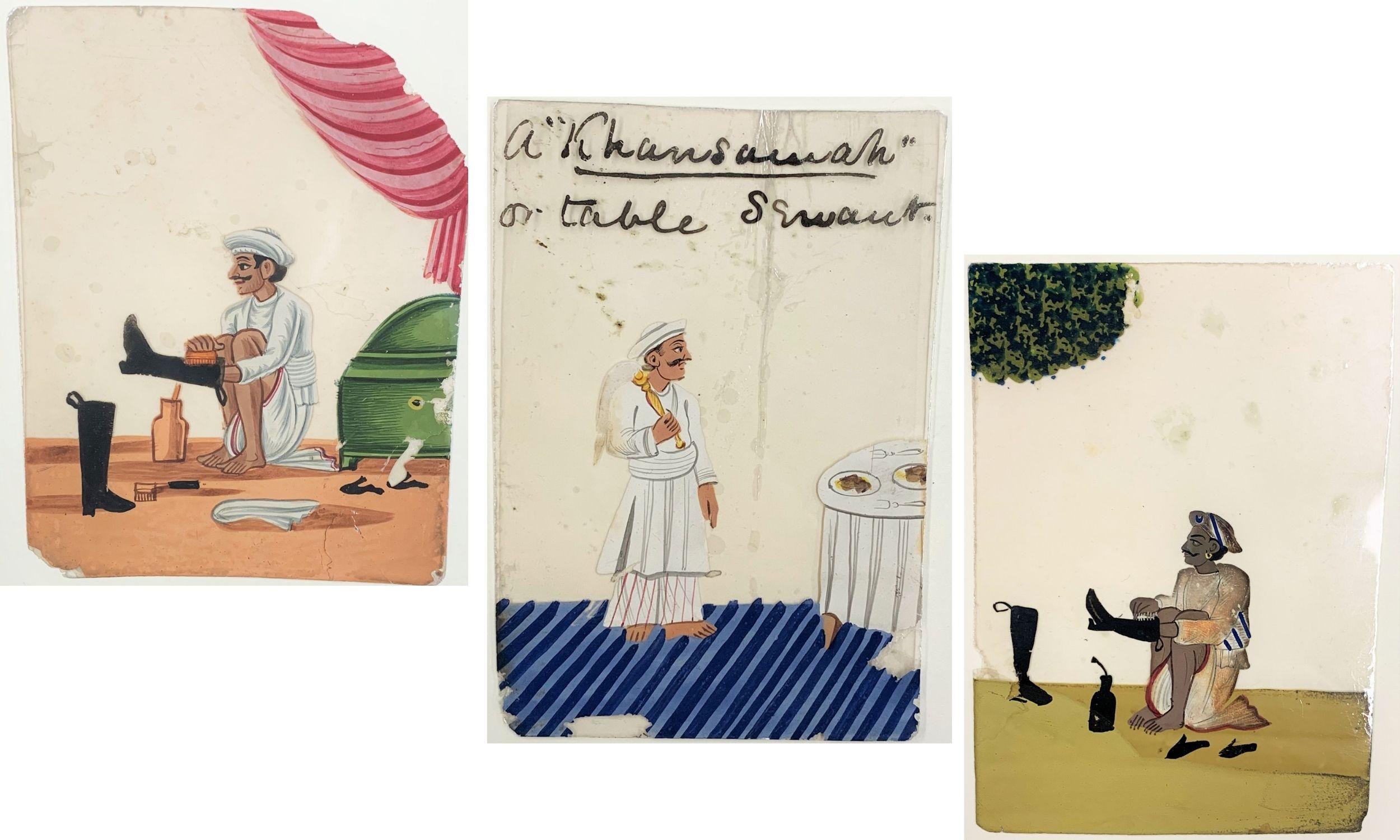Indian Mica Paintings
April 1, 2022
This month’s Artifact of the Month is a collection of Indian mica paintings (A#1993.005.641.A-O). These fifteen 19th century paintings were created by Indian artists during the colonial period for the Anglo-American souvenir market. Along with other local art, they were so popular amongst government officials, merchants, and missionaries that they came to be known as “Company Paintings” collectively. Company Paintings are an excellent example of colonial relationships as Indian artisans combined traditional Mughal and Hindu content with Western techniques, catering specifically to colonial tastes. The subjects of these paintings include individuals such as a shoeshine worker, a hunter, and a four-armed woman with a sword riding a horse. Grease-pencil notes on some of the paintings refer to the occupations of the subjects. Since mica is a crystalline mineral and does not absorb pigments, the gouache-like paint does not adhere strongly to the mica and is still vivid.
Unfortunately, this property of mica also means that the paintings are extremely fragile and susceptible to chipping of both the medium and the base. This chipping and delamination (the layers of the mica splitting) is a major concern for conservation and preservation attempts in addition to the usual dangers of warping and discoloration. A great deal of research has been done on how to best treat works like these to prevent further damage and preserve them for future generations. The Victoria and Albert Museum, along with other institutions, has been at the forefront of this endeavor. The resulting literature explains how to examine the paintings safely, consolidate and stabilize the medium, and then rehouse them in secure containers. Featuring our selection with Artifact of the Month has given us the opportunity to improve their storage, which is why reproductions will be on display.
Category: Decorative Papers
Region of Origin: Indian/Middle Eastern
Keywords:
Ephemera

